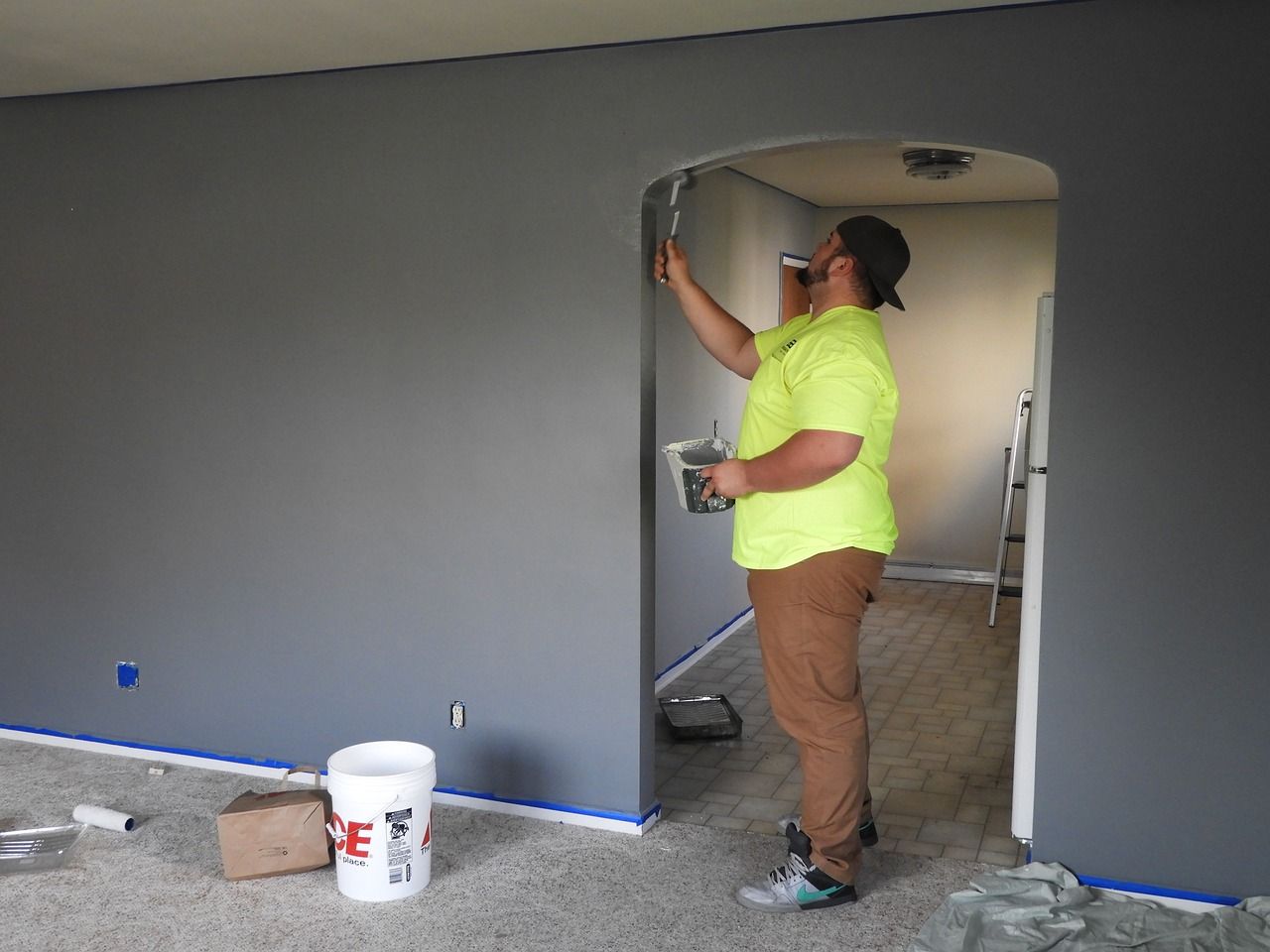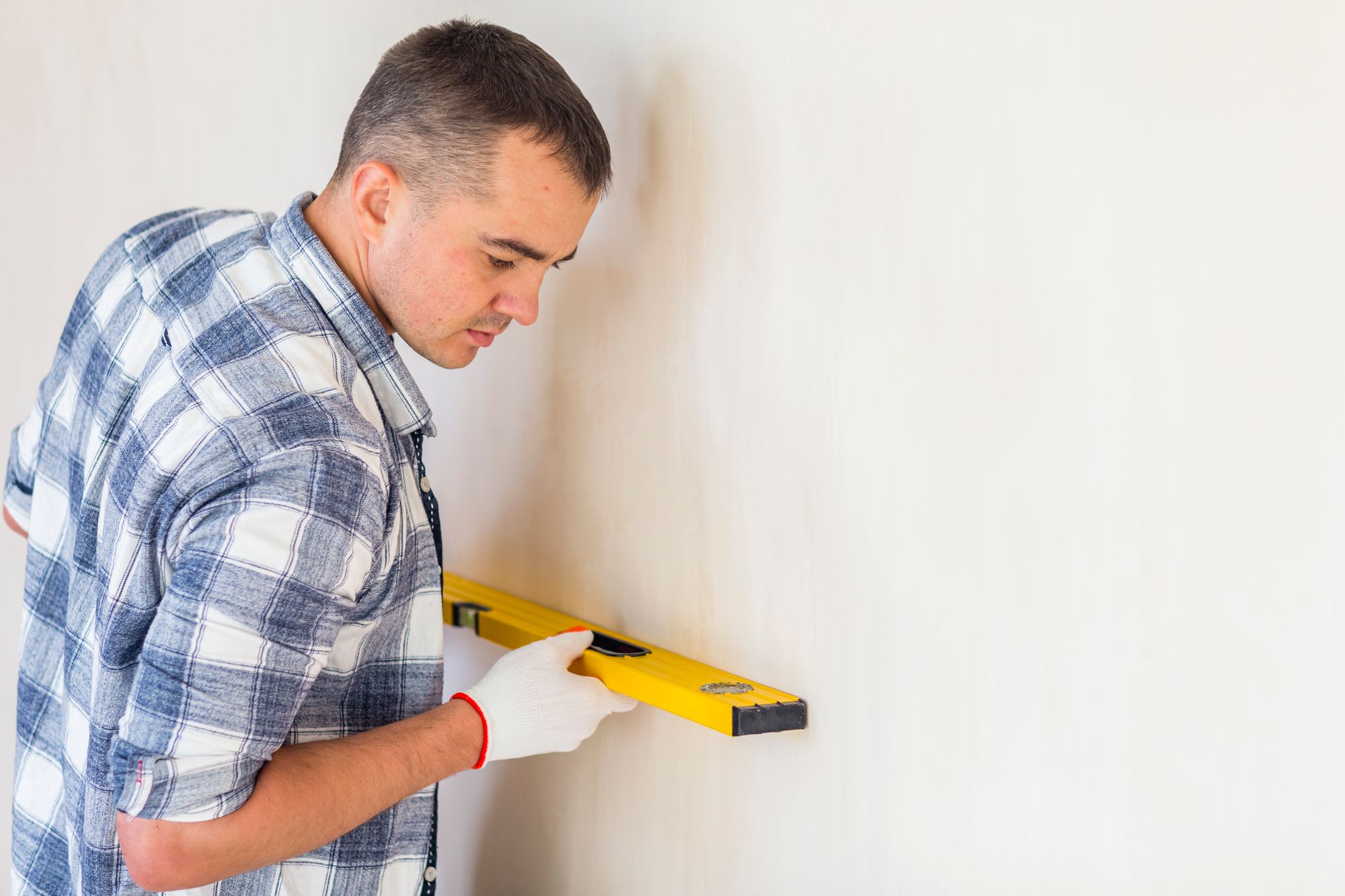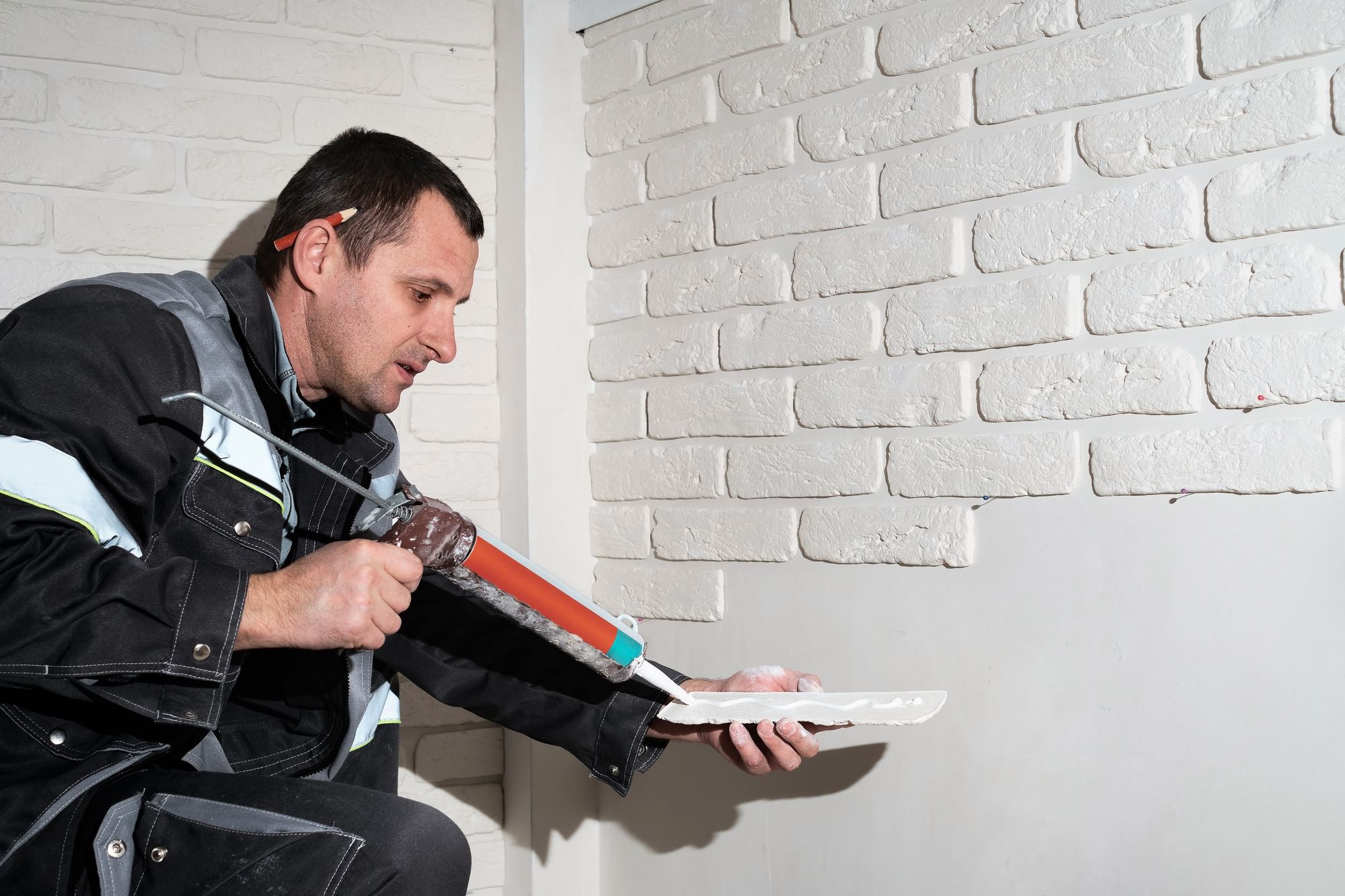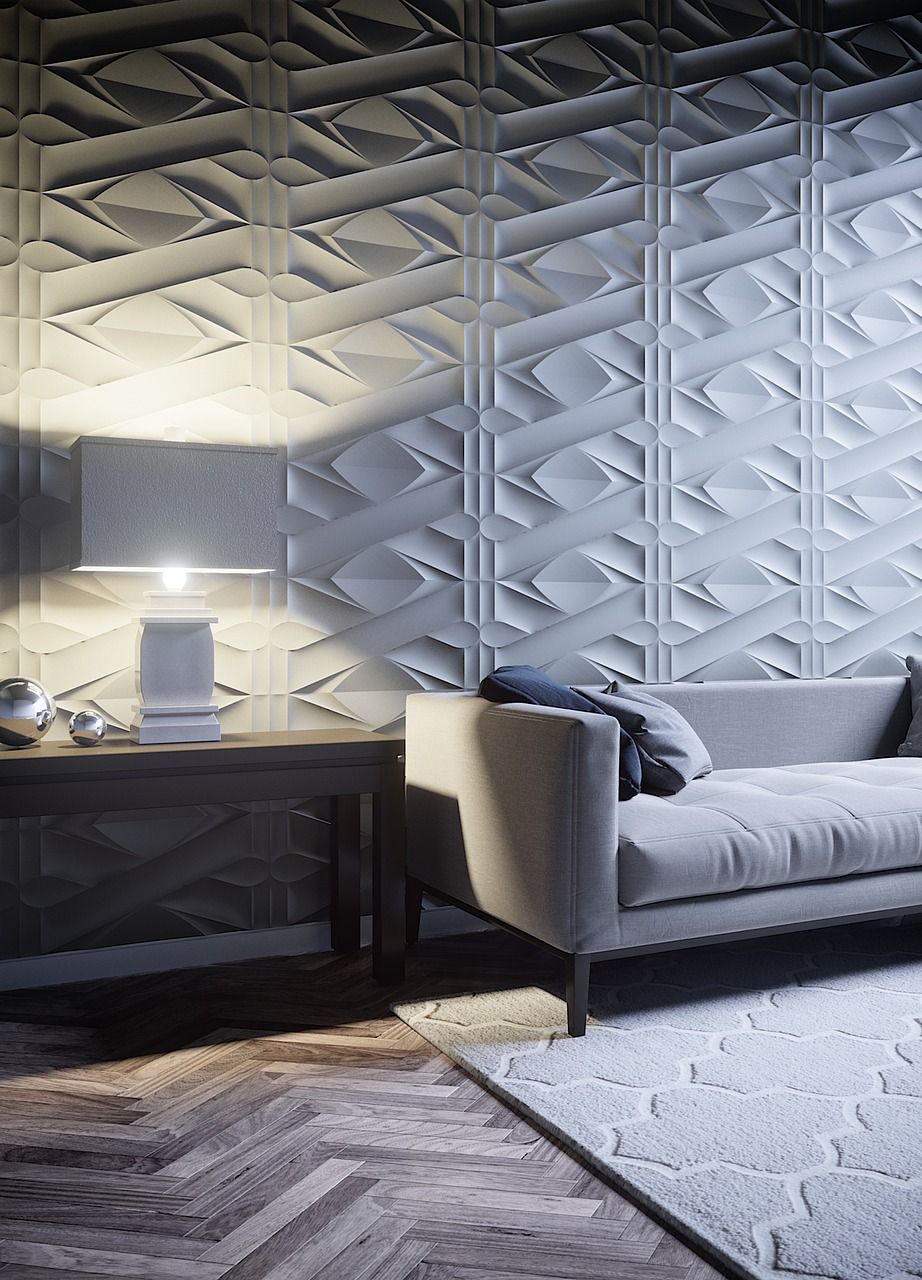Table of Contents
- Introduction
- Understanding Wall Upgrades
- Smart Strategies for Wall Upgrades and Reconstruction
- Wall Upgrades and Reconstruction: Expert Insights
- Navigating Financial Ease
- Interactive Financing Calculator: Comparison of Financing Options
- Actionable Takeaways
- Testimonials:
- Conclusion
Key Takeaways
1. Wall Upgrades and Home Reconstruction: These are crucial elements in home improvement. They not only enhance the aesthetic appeal but also increase the property's value. However, effective planning is necessary to manage costs.
2. Financial Planning: A critical aspect of renovation projects. By exploring various funding options like renovation financing, homeowners can execute their vision without straining their budget.
3. Smart Strategies: These can simplify the renovation process. They include understanding the scope of the project, budgeting, choosing cost-effective materials, and leveraging financing options.
4. Navigating Financial Ease: Financial planning during renovations involves budgeting, understanding financing options, and making smart decisions to avoid financial strain.
5. SimpleDirect Services: These can be a valuable resource for individuals planning renovations. They provide expert advice, tips, and financial services catered to home improvement projects.
Remember, smart financial planning and strategic decision-making are key to successful and stress-free home renovations.
Introduction
Have you ever looked at your home's walls and thought they could use a makeover? Or perhaps, you're considering a more comprehensive home reconstruction project to breathe new life into your property. Either way, you're embarking on an exciting journey that can significantly enhance your living space and boost your property's value.
However, home renovations, whether it's wall upgrades or full-scale reconstructions, can be daunting—especially when considering the financial implications. But worry not! With smart strategies, you can navigate these home improvement waters with financial ease, making your dream home a reality without breaking the bank.
This article weaves through the intricate maze of wall upgrades and home reconstruction, offering insights into their benefits, costs, and the smart strategies that can make these projects financially manageable. We'll also delve into various funding options, including renovation financing, to help you make informed decisions.
As you read, you'll discover that home renovations don't have to be a daunting prospect. Instead, they can be an enjoyable journey, a creative outlet, and a rewarding experience, especially when armed with the right strategies and guidance. So, let's dive in and start breaking walls to build your dream home!

Understanding Wall Upgrades
A home is more than just a place to live; it's a canvas that reflects your personal style. Wall upgrades are a simple yet impactful way to transform this canvas. They can involve a range of improvements, from a fresh coat of paint to installing new wallpapers, or even adding architectural elements like wainscoting and crown molding.
Paint Textures:
- Preparation: Begin by cleaning the wall surface to ensure it is free of dust and dirt. Tape off trim, windows, and doors.
- Primer: Apply a primer suited for textured paint to help the texture adhere better and to ensure an even base.
- Choosing Texture: Decide on the texture effect you desire (e.g., popcorn, orange peel, sand). Purchase the appropriate textured paint or additives to mix with standard paint.
- Application: Use tools suited for your chosen texture, such as a textured roller, sponge, or trowel, and apply the paint following the manufacturer’s instructions. Techniques vary from dabbing to rolling to create different effects.
- Drying: Allow ample time for the paint to dry, checking the manufacturer's guidelines for drying times.
Wallpaper Installation:
- Wall Preparation: Ensure walls are smooth and repair any holes or imperfections. Apply a primer if transitioning from a dark to a light wallpaper design.
- Measuring and Cutting: Measure the wall height, adding a few extra inches for trimming. Cut the wallpaper strips accordingly.
- Applying Adhesive: Depending on the type of wallpaper, you may need to apply adhesive to the paper or activate pre-pasted wallpaper by submerging it in water.
- Hanging: Start from a corner or behind a door. Align the first strip to a plumb line to ensure it’s straight, then smooth it onto the wall, working from top to bottom.
- Seams and Trimming: Carefully match the patterns at the seams for a seamless look. Trim excess wallpaper at the top and bottom with a sharp utility knife.
Creating Feature Walls with Wainscoting:
- Design Planning: Choose a wainscoting style (e.g., beadboard, raised panel) that complements your room. Measure your wall to plan the layout and purchase materials.
- Installation: Mark the height of your wainscoting on the wall. Install horizontal baseboards first, followed by vertical boards, and then the top rail. Use a nail gun or adhesive for securing.
- Finishing Touches: Apply wood filler to nail holes and seams. Once dry, sand the surface smoothly. Finish with paint or stain as desired.

Material Comparison
- Paint: Paint offers a wide range of colors and finishes at an affordable cost. While it requires periodic touch-ups, high-quality paints can be durable and easy to clean. A fresh coat of paint can completely transform a room. It's one of the cheapest and easiest ways to upgrade your walls. Depending on the quality, a gallon of paint can cost between $15-$50, which typically covers around 400 square feet.
- Wallpaper: Another affordable option is wallpaper. Wallpapers can add texture, depth, and unique patterns to a room. Modern wallpapers are more durable and easier to remove than older types. Modern wallpapers come in a myriad of designs and textures that can add depth and character to your walls. The cost varies widely based on the material (vinyl, fabric, etc.) and design. Prices can range from $0.50 to $5 per square foot.
- Wainscoting: Adds architectural interest and durability to walls. It can be expensive, depending on the material (wood, MDF, PVC), but is long-lasting and can withstand wear and tear.
- Stone and Tile: Ideal for feature walls, offering unmatched durability and a unique aesthetic. The cost is on the higher end, especially for natural stone, and installation can be complex. In kitchens or bathrooms, installing a tile backsplash can add a pop of color and protect your walls from moisture and stains. Costs can vary, but on average, homeowners spend around $900-$2,000 for professional installation.
- Wood Panels: Provide warmth and texture, suitable for various styles from rustic to modern. While wood can be expensive and requires maintenance to prevent damage from moisture, it offers a timeless look
- Shelves: Adding floating shelves is not only cost-effective but also adds functional value by creating additional storage space. A single shelf can cost anywhere between $10-$50, depending on the material and size.
- DIY Artwork: Unleash your creativity by making your own wall art. This could be anything from a framed family photo, a canvas painting, or even a wall mural. The cost is minimal and depends on the materials used.
In conclusion, wall upgrades are an effective way to spruce up your home, increase its value, and improve its functionality. With smart planning and budget-friendly options, you can drastically enhance your living space without putting a dent in your wallet. Remember, it's not about how much you spend, but how wisely you spend it.
Why should homeowners consider wall upgrades? Here are a few compelling reasons:
Boost Aesthetic Appeal: Wall upgrades can dramatically enhance your home's visual appeal. Whether you're going for a modern, minimalist look or a vintage, rustic vibe, wall improvements can help you achieve your desired aesthetic.
Increase Property Value: Quality wall upgrades can significantly increase your property's market value. If you're planning to sell your house in the future, wall improvements can offer an impressive return on investment.
Improve Comfort and Functionality: Wall upgrades aren't just about aesthetics. They can also improve your home's comfort and functionality. For instance, installing insulation can increase energy efficiency and reduce utility bills, while adding shelves or built-ins can provide extra storage space.

Smart Strategies for Wall Upgrades and Reconstruction
Embarking on a home renovation journey can be thrilling, but it also requires careful planning and execution. Here are some smart strategies for wall upgrades and reconstruction that can help you achieve your goals with ease.
1. Set a Realistic Budget: This is the first and most crucial step. Determine how much you can afford to spend on your renovation and then break down your budget into different categories like labor, materials, and unexpected costs. Always keep a buffer for unforeseen expenses.
2. Plan Ahead: Don't rush into your renovation project. Take the time to plan out every detail, from the design and materials to the timeline and budget. This can help you avoid costly mistakes and ensure a smooth renovation process.
3. Prioritize: Not all upgrades are created equal. Prioritize your renovations based on your needs and the potential return on investment. For example, if you're planning to sell your home, focus on improvements that will increase its market value.
4. DIY vs. Professional Help: Assess your skills and decide which tasks you can do yourself and which ones require professional help. While DIY can save money, certain tasks like electrical work or structural changes should be left to the professionals.
5. Shop Around: Don't settle for the first quote you get. Shop around for materials and contractors to ensure you're getting the best value for your money. Online platforms can be a great resource for comparing prices and reviews.
6. Reuse and Recycle: Where possible, reuse materials. This not only saves money but is also environmentally friendly. For example, if your kitchen cabinets are in good shape, consider painting or refacing them instead of replacing them.
7. Leverage Financing Options: If your budget is tight, consider financing options like home equity loans or personal loans. These can provide the necessary funds for your renovation without draining your savings.
8. Be Flexible: Renovations often come with surprises. Be prepared to adapt your plans and budget accordingly. Being flexible can help you navigate these surprises with minimal stress.
9. Invest in Quality: While it can be tempting to cut corners to save money, investing in quality materials and workmanship can save you money in the long run by reducing maintenance and replacement costs.
10. Think Long-Term: Consider the long-term implications of your renovation decisions. For example, choosing energy-efficient upgrades can lead to significant savings on your utility bills over time.
By applying these smart strategies, homeowners can navigate the renovation process with confidence, making their dream home a reality without unnecessary stress or financial strain. Remember, successful home renovations are not just about making changes, but making the right changes in the right way.

Wall Upgrades and Reconstruction: Expert Insights
Expert Quotes
- Jane K., Interior Designer: "The trend now is all about personalization; it's not just about what's in vogue, but how you make a space truly yours. Wall upgrades like mixed media art installations or digital wall coverings allow for that personal touch."
- Vivian S., Renovation Expert: "Sustainability is key. We’re seeing a shift towards materials that are not only eco-friendly but also durable and timeless. For wall treatments, this means high-quality paints with low VOC and sustainable wallpapers."
Case Studies
Case Study 1: The Eco-Friendly Makeover
- Overview: A homeowner wanted to upgrade their living room walls with an emphasis on sustainability.
- Strategy: They chose zero VOC paint for a healthy living environment and installed bamboo wall panels as a feature wall due to bamboo's rapid regrowth rate.
- Outcome: The project was a testament to how eco-friendly choices can also lead to stunning aesthetic results, enhancing the room's warmth and appeal.
Case Study 2: Historic Home Modernization
- Overview: Updating a historic home with modern comforts while preserving its character.
- Strategy: The use of digital wallpaper mimicking original patterns and textures was chosen for authenticity. Wainscoting was restored and matched with modern paint colors to blend the old with the new seamlessly.
- Outcome: This approach maintained the home's historic charm while introducing elements that met contemporary standards for comfort and style.
These insights and case studies underscore the importance of thoughtful planning and the integration of personal and environmental considerations into wall upgrades and reconstruction projects.
Navigating Financial Ease
Renovating your home can be a significant financial undertaking. However, smart planning, budgeting, and understanding your financing options can make the process much more manageable. Here are some strategies to help you navigate financial ease during your wall upgrades and reconstruction.
1. Establish a Budget: Before starting any renovation work, it's crucial to establish a budget. This will give you a clear understanding of your financial boundaries and help prevent overspending. Remember to account for unforeseen expenses by adding a contingency of around 10-20% to your total budget.
2. Prioritize Your Renovations: It’s unlikely that you can do everything at once, so prioritize based on your needs, the potential return on investment, and your budget. This can prevent you from overstretching your finances and help ensure that critical projects aren't left undone.
3. Explore Financing Options: There are various ways to finance home renovations, including savings, home equity loans, personal loans, and renovation loans. Each comes with its pros and cons, and the best option for you will depend on your financial situation and renovation needs.
4. Understand Renovation Financing: Renovation financing can be a great way to fund your home improvements. This involves borrowing against the post-renovation value of your home, enabling you to make significant upgrades without upfront costs. However, it's crucial to understand the terms and conditions of such loans to ensure they fit your financial plan.

5. Get Multiple Quotes: Don’t settle for the first contractor you find. Get quotes from several contractors and compare them to ensure you're getting the best possible deal. However, remember that the cheapest option isn't always the best—quality and reliability are just as important.
6. Time Your Renovation: Timing can significantly impact the cost of renovations. For example, contractors may offer lower prices during their slow season. Likewise, prices for materials can fluctuate throughout the year, so buying during sales can lead to substantial savings.
7. Save on Materials: There are numerous ways to save on materials without compromising quality. Consider buying in bulk, shopping at discount stores, or even using reclaimed or recycled materials.
8. Leverage Tax Credits: Certain energy-efficient upgrades qualify for tax credits, which can offset some of the renovation costs. Be sure to check if your planned upgrades qualify, and remember to keep all necessary documentation.
9. Plan for Future Costs: Renovations can impact your future costs, such as utility bills and home insurance premiums. Consider these in your budgeting to ensure you can comfortably afford these ongoing expenses.
10. Maintain Good Communication: Keep open lines of communication with your contractor to avoid misunderstandings that could lead to cost overruns.
By adopting these strategies, homeowners can navigate the financial aspects of renovation with ease. Remember, the goal is not just to create a beautiful and functional home, but to do so in a way that makes financial sense both now and in the future.
Interactive Financing Calculator
To empower homeowners in their renovation journey, we introduce an innovative tool: the Interactive Financing Calculator. This online resource enables users to input the estimated costs of their wall upgrade projects, including materials and labor. The calculator then presents a variety of financing options, tailored to the user's budget and project scale. It factors in interest rates, loan terms, and monthly payment estimates, allowing homeowners to make informed decisions based on their financial capacity.
Comparison of Financing Options
Personal Loans:
- Interest Rates: Typically range from 6% to 36%, depending on creditworthiness.
- Term Lengths: 1 to 7 years, offering flexibility based on the borrower's repayment preference.
- Eligibility Criteria: Credit score, income, and debt-to-income ratio are critical factors. Generally, a score of 600+ is required.
Home Equity Lines of Credit (HELOCs):
- Interest Rates: Variable rates, often starting lower than personal loans but can increase over time.
- Term Lengths: Draw period of 10 years, followed by a repayment period of 15 to 20 years.
- Eligibility Criteria: Based on the homeowner's equity in their home, a good credit score (680+), and a debt-to-income ratio below 43%.
Home Equity Loans:
- Interest Rates: Fixed rates, making it easier to budget for consistent monthly payments.
- Term Lengths: 5 to 30 years, providing a wide range for repayment.
- Eligibility Criteria: Similar to HELOCs, focusing on home equity, credit score, and financial stability.
Renovation Loans:
- Interest Rates: Comparable to personal loans, but secured by the post-renovation home value.
- Term Lengths: Up to 20 years, depending on the loan amount and project scope.
- Eligibility Criteria: Project estimates and plans may be required, along with a credit score of 620+.

Actionable Takeaways
To ensure a smooth and successful wall upgrade or reconstruction project, we've compiled a comprehensive checklist. This resource guides homeowners from the planning stage through to the final execution, ensuring nothing is overlooked.
- Define your renovation goals and style preferences.
- Create a detailed project plan, including design inspirations and materials.
- Estimate your project costs using the Interactive Financing Calculator.
- Explore and compare financing options, considering your financial situation.
- Obtain multiple quotes from contractors, and select the best fit based on quality and cost.
- Apply for the chosen financing option, ensuring all documentation is in order.
- Schedule the project, considering any seasonal impacts or personal commitments.
- Monitor the project's progress, staying in communication with your contractor.
- Upon completion, conduct a final walkthrough to ensure satisfaction.
- Share your renovation experience to help guide future homeowners.
Testimonials:
John and Sarah's Story: "We transformed our outdated living room walls into a modern, inviting space. The Interactive Financing Calculator was a game-changer, helping us choose a HELOC that fit our budget perfectly. Seeing the project come together without financial strain was truly rewarding."
Mia's Journey: "After inheriting my grandmother's house, I wanted to honor its history while making it my own. Navigating the renovation process seemed daunting, but the detailed financing guide made all the difference. I opted for a renovation loan, which allowed me to upgrade the walls and preserve the home's character."
These testimonials underscore the importance of careful planning, informed financial decisions, and the impact of strategic renovations. Armed with the right tools and guidance, any homeowner can navigate the complexities of wall upgrades and reconstruction, turning their vision into reality.
In conclusion, wall upgrades and home reconstruction offer an incredible opportunity to enhance the aesthetic appeal, functionality, and value of your home. However, these renovations require careful planning, smart decision-making, and astute financial management to maximize their benefits and minimize potential stress or financial strain.
Key strategies include setting a realistic budget, prioritizing renovations, assessing DIY vs. professional work, shopping around for the best deals, and exploring various financing options. It's essential to remember that successful home renovations are not just about making changes, but making the right changes in the right way.
Moreover, even though renovations might require a significant investment, they can offer substantial returns in the long run. Not only can they increase the market value of your property, but they can also improve your living experience and even lead to future savings. Therefore, it is worth investing time, effort, and resources into these home improvements.
Ready to make your dream home a reality? SimpleDirect is here to assist you every step of the way. We offer a range of services to help you navigate the renovation process smoothly and successfully. From providing expert advice to connecting you with trusted contractors, we've got you covered.
Moreover, our resources can guide you in managing your finances efficiently during this journey. Don't hesitate to reach out to us for more information and assistance. Start your home renovation journey with SimpleDirect today, and transform your home into the space you've always dreamed of.






